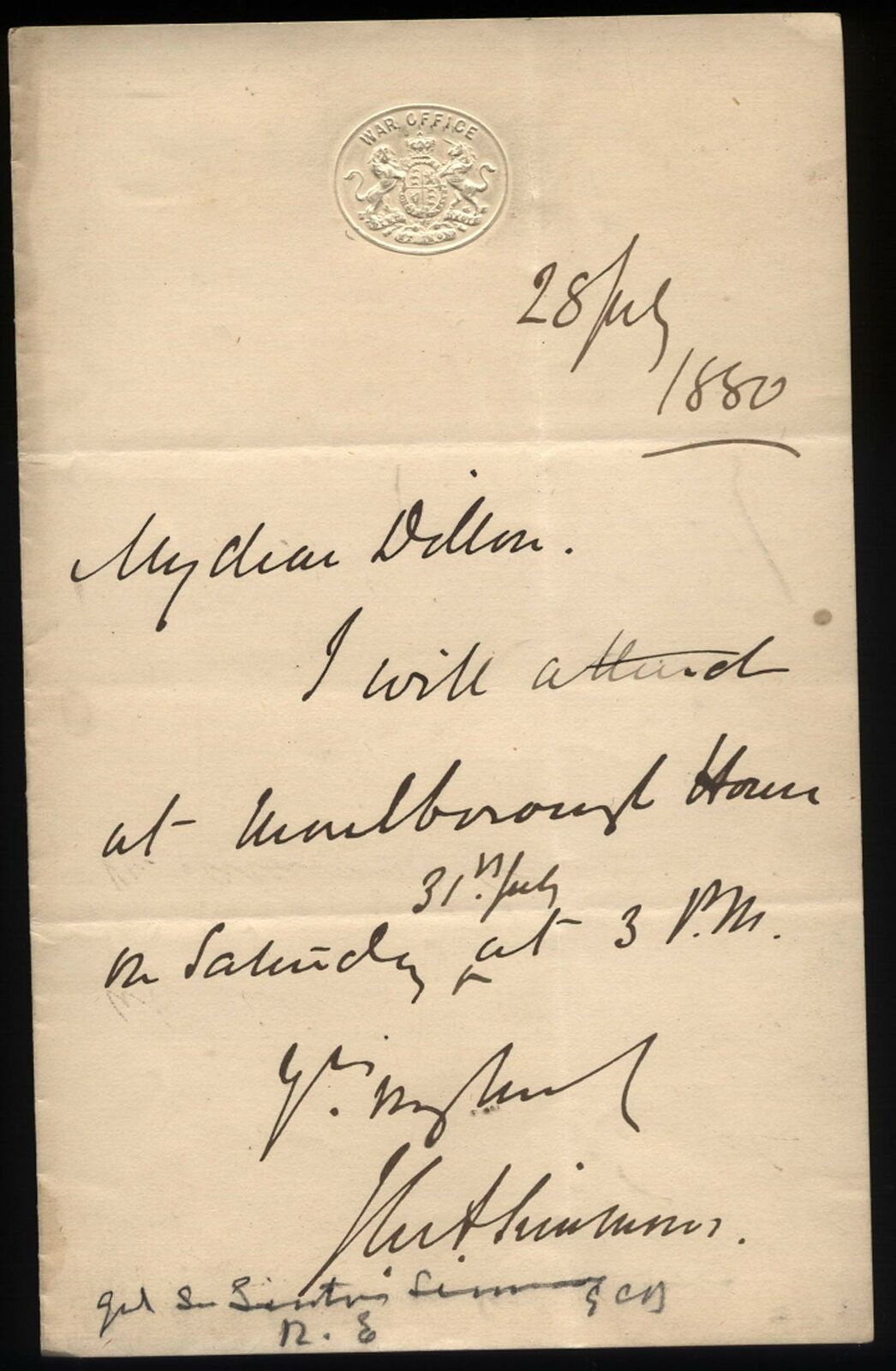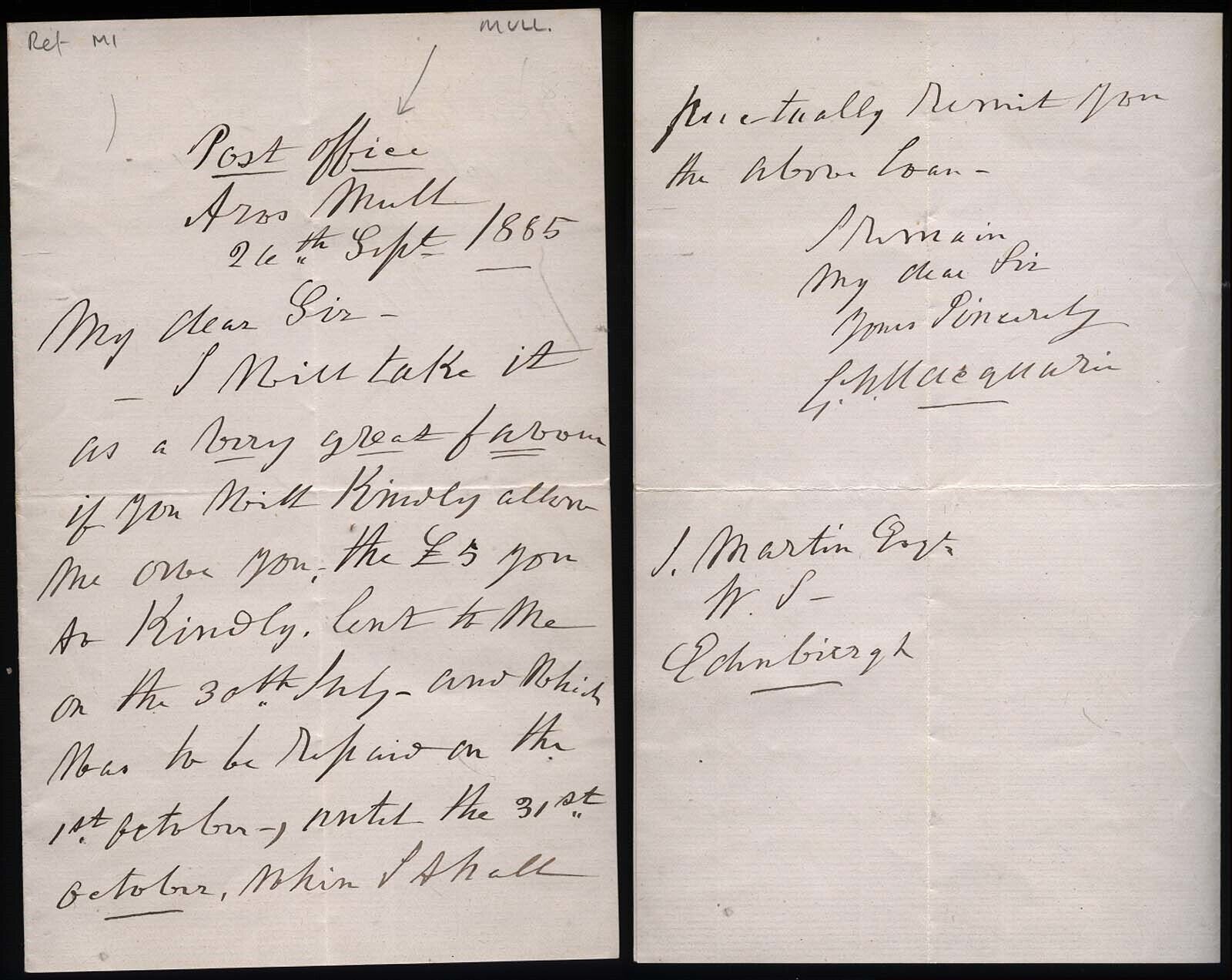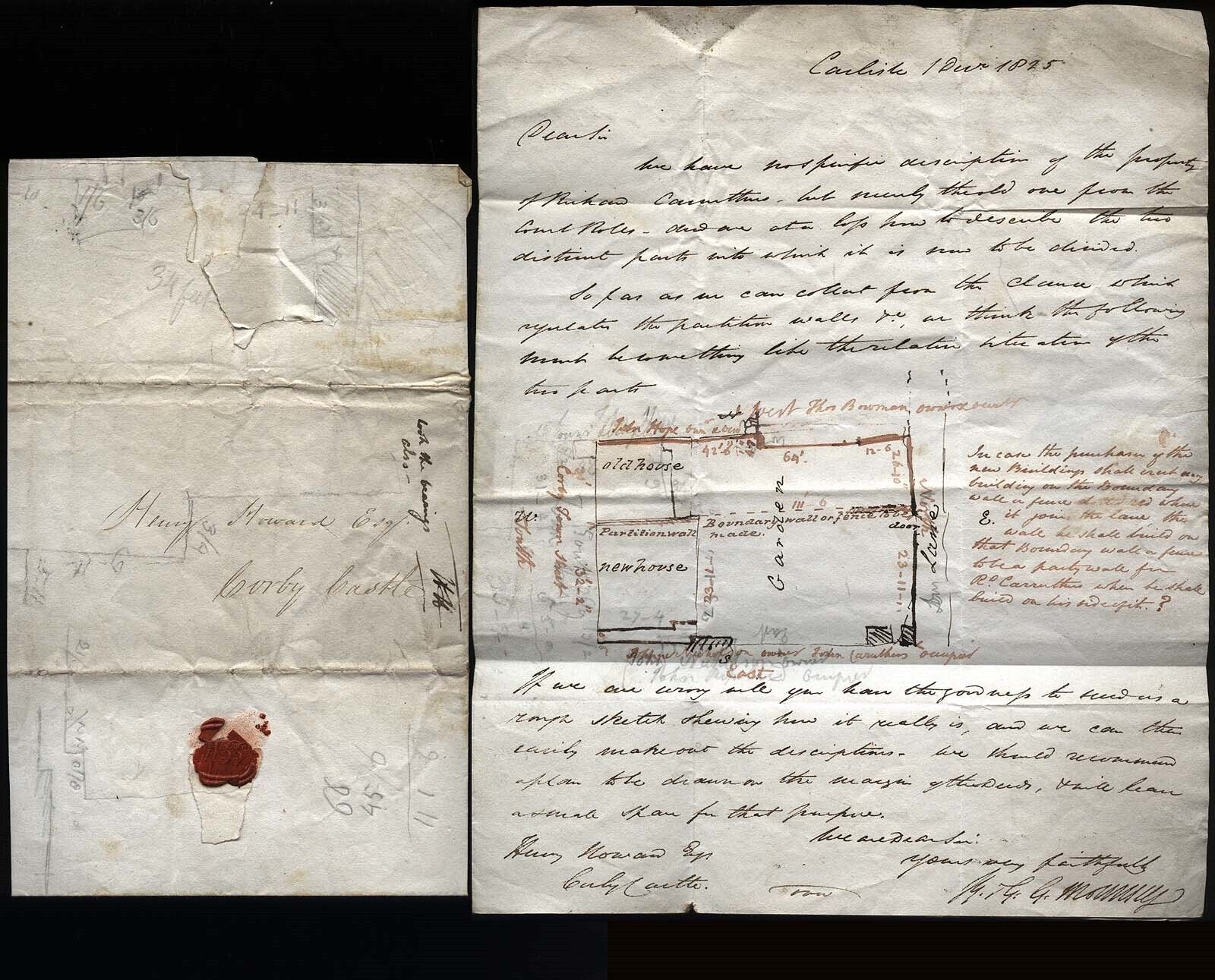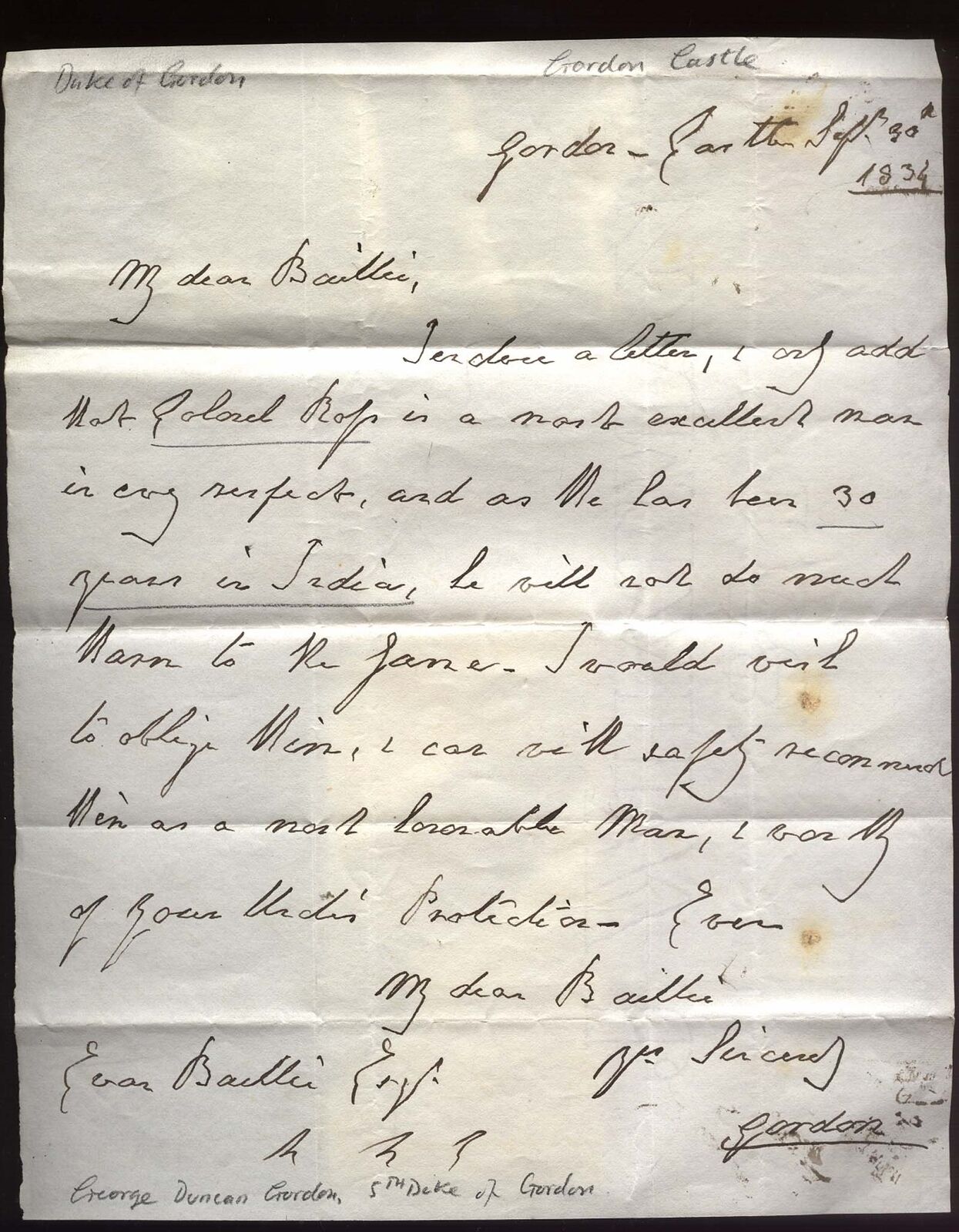-40%
Circa 1895 Lady FEODORA GLEICHEN British sculptor of figures and portrait busts
$ 159.95
- Description
- Size Guide
Description
Circa 1895 Lady FEODORA GLEICHEN British sculptor of figures and portrait bustsThis product data sheet is originally written in English.
Undated but Circa 1895-1900 Written from Her Studio at ST JAMES PALACE. S.W. to Dear "Johnny" ( General Sir John Ponsonby) 3 pages inviting him to come to the family Seat of Ebington Campden. A personnal friend also of his Mother Mary Ponsonby, Wife of sir Henry , Queen Victoria's Private secretary, who had moved to Gilmore, Ascot after the Death of Sir Henry in 1895.
Lady Feodora Georgina Maud Gleichen (20 December 1861 London – 22 February 1922 London) was a British sculptor of figures and portrait busts and designer of decorative objects
.
Born Countess Feodora Georgina Maud von Gleichen, she was the eldest daughter of Prince Victor of Hohenlohe-Langenburg (a British naval officer and sculptor, and half-nephew of Queen Victoria) and his morganatic wife, Laura Seymour, a daughter of Admiral Sir George Seymour, a remote nephew of Henry VIII's Queen Jane Seymour. Within her family she was called Feo. Her father having been largely disinherited at the time of his marriage, he initially adopted his wife's morganatic comital title. The family were taken in by the Queen and given grace and favour accommodations at St James's Palace. Her brother, Lord Edward Gleichen, became a career military officer and author. Her sister, Lady Helena Gleichen, became a portrait painter.
On 15 December 1885, the Court Circular announced the Queen's permission for Feodora's mother to share her father's rank at the Court of St James, and henceforth they were known as TSH Prince and Princess Victor of Hohenlohe-Langenburg. But the Queen did not extend that privilege to their four children, although she confirmed use of their German style as count and countesses. In 1889 Feodora and her sisters Valda and Helena were bridesmaids to the Princess Royal Louise and the Earl of Fife.
On 12 June 1913 Feodora and her sisters were granted precedence before the daughters of dukes in the peerage of England by George V.
Gleichen studied art in her father's studio at St James's and later with Alphonse Legros at the Slade School of Art. While maintaining her father's studio she associated with leading artists such as Sir George Frampton, sculptor of the statue of Peter Pan in Kensington Gardens. She completed her studies in Rome in 1891 and regularly exhibited at the Royal Academy from 1892 and at the New Dudley Gallery.
After her father's death in 1891, she took over his studio inside of St James's Palace.
Gleichen was a multidisciplinary artist, creating large sculptures for public venues as well as smaller objects, portrait busts, drawings, small bronzes and bas reliefs. She produced many decorative objects such as frames, chalices and small sculptures, sometimes for the use of the royal family. A bas-relief and hand-mirror in jade and bronze won her a bronze medal in 1900 at the Exposition Universelle in Paris. She also helped with illustrations for the Younghusband Expedition to Tibet in 1904.
MAJOR WORKS WERE
Statue of Queen Victoria surrounded by children, Royal Victoria Hospital, Montreal, Quebec, Canada, 1895. 1906 bronze statue of Diana, Rotten Row, Hyde Park, United Kingdom.
Relief, Art Gallery of New South Wales, Sydney, Australia, 1906.
King Edward VII memorial, King Edward VII Hospital, Windsor, United Kingdom, 1912.
Statue of Florence Nightingale, Derbyshire Royal Infirmary, 1914.
37th (British) division memorial, Monchy-le-Preux, France, 1921
Her 1921 work Head of a Girl is included in the permanent collection of the Tate Gallery. A sculptural relief titled Queen Hatasu of Egypt is included in the permanent collection of the Art Gallery of New South Wales
During World War I she abandoned her German titles, accepting demotion by the King to the style and rank of a marquess's daughter, by Royal Warrant of Precedence, pursuant to the King's dynastic reform of titles and names during establishment of the House of Windsor in 1917.
Following an operation for appendicitis in 1922, she died at her apartment in St James's Palace. Shortly before her death, she was awarded the Légion d'honneur in 1922 and was later posthumously made the first woman member of the Royal British Society of Sculptors.
---
Fresh to the Market Place, from Major-General Sir John Ponsonby's Collection recently purchased by us, and until now, had remained in the possession of Sir John's descendants.
For more from this collection see our shop category for SIR JOHN PONSONBY COLLECTION
John Ponsonby (British Army officer)From Wikipedia, the free encyclopedia
Major-General Sir John Ponsonby KCB CMG DSO (25 March 1866 – 26 March 1952) was a British Army officer who commanded 5th Division during World War I
Born the son of Sir Henry Ponsonby (Queen Victoria's Private Secretary), his Mother Hon. Mary Elizabeth Ponsonby, Maid of Honour to Queen Victoria and a daughter of John Crocker Bulteel.
His brothers were Frederick Ponsonby, ( Assistant Private Secretary to Edward VII & GV), and Arthur Augustus William Harry Ponsonby, 1st Baron Ponsonby of Shulbrede, (British politician, writer, and social activist).
Sir John was educated at Eton College, He was gazetted to the Royal Irish Rifles 16 November 1887, and to the Coldstream Guards 15 August 1888, becoming Lieutenant 29 June 1891. He was ADC to the Governor and Commander-in-Chief, South Africa, 10 August 1891 to 30 January 1895; served in operations in Matabeleland (Medal); was promoted to Captain 7 September 1898, and in that year served in Uganda (Medal), and again in 1899, during the operations against Kabarega (clasp). Captain Ponsonby served in the South African War, 1899-1902, on special service with the Rhodesian Field Force, 19 February 1900 to 7 July 1901. He was Adjutant, 5th New Zealand Regiment, 8 June 1900 to 1 January 1901; afterwards in command 1 January to 18 January 1901. From February to May 1900, be was employed with Mounted Infantry, and he took part in operations in the Transvaal, west of Pretoria, from July to 29 November 1900; operations in the Transvaal, February to June 1901; operations in Cape Colony, February to 31 May 1902. He was mentioned in Despatches [London Gazette, 10 September 1901]; received the Queen's Medal with four clasps, the King's Medal with two clasps, and was created a Companion of the Distinguished Service Order [London Gazette, 27 September 1901]: "John Ponsonby, Captain, Coldstream Guards. In recognition of services during the operations in South Africa". The Insignia were presented by the King 27 October 1901. He was promoted to Major 23 January 1904, and commanded the Guards' Depot 1 March 1905 to 28 February 1907. He became Lieutenant Colonel 28 October 1913. Lieutenant Colonel Ponsonby served in the European War, 1914—18; commanded the 2nd Guards Brigade, BEF, 26 August 1915 to 19 November 1916: was given the Brevet of Colonel 1 January 1916; commanded the Special Reserve Infantry Brigade 28 November 1916 to 7 March 1917; commanded the 21st Infantry Brigade, BEF, 8 March to 20 March 1917; became Colonel 20 March 1917; commanded the 2nd Guards Brigade, British Armies in France, 21 March to 21 August 1917; commanded the 40th Division, British Armies in France, 22 August 1917 to 3 July 1918; subsequently commanded the 5th Division, British Armies in France, 4 July 1918 to 1 April 1919; was promoted to Major General 1 January 1919. He was mentioned in Despatches; created a CMG in 1915, a CB in 1918, and was given the Brevet of Colonel.
He went on to become General Officer Commanding 5th Division remaining in that role until the end of the War. After the War he became General Officer Commanding the Madras District of India. He retired in 1928.
He lived at Haile Hall near Beckermet in Cumbria
:
Powered by SixBit's eCommerce Solution
Undated but Circa 1895-1900 Written from Her Studio at ST JAMES PALACE. S.W. to Dear "Johnny" ( General Sir John Ponsonby) 3 pages inviting him to come to the family Seat of Ebington Campden. A personnal friend also of his Mother Mary Ponsonby, Wife of sir Henry , Queen Victoria's Private secretary, who had moved to Gilmore, Ascot after the Death of Sir Henry in 1895. Lady Feodora Georgina Maud Gleichen (20 December 1861 London – 22 February 1922 London) was a British sculptor of figures and portrait busts and designer of decorative objects.Born Countess Feodora Georgina Maud von Gleichen, she was the eldest daughter of Prince Victor of Hohenlohe-Langenburg (a British naval officer and sculptor, and half-nephew of Queen Victoria) and his morganatic wife, Laura Seymour, a daughter of Admir
Related Interests
SCULPTOR
EAN
Does Not apply
Country
England
Estate or House name
ST JAME'S PALACE
City/Town/Village/Place
London
Famous Persons
Feo Gleichen
Autograph Type
Manuscript Letter
Era
1891-1900
Document Type
Letter
Surname Initial
G









